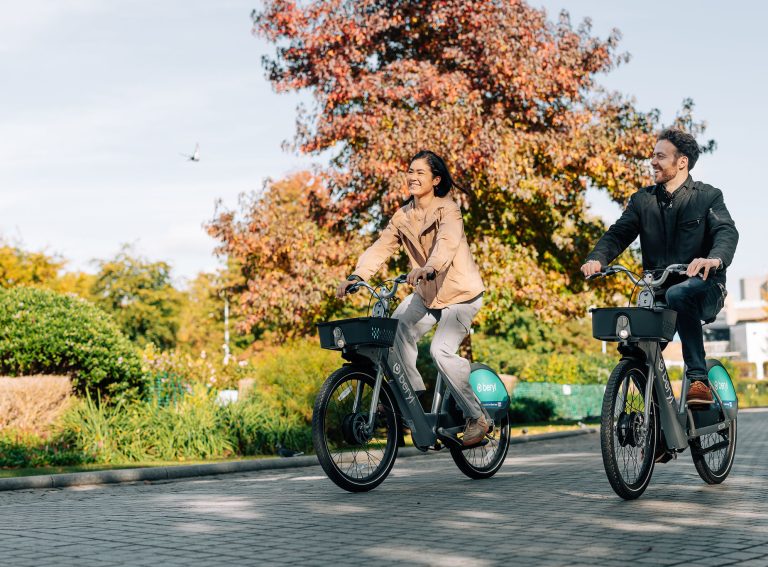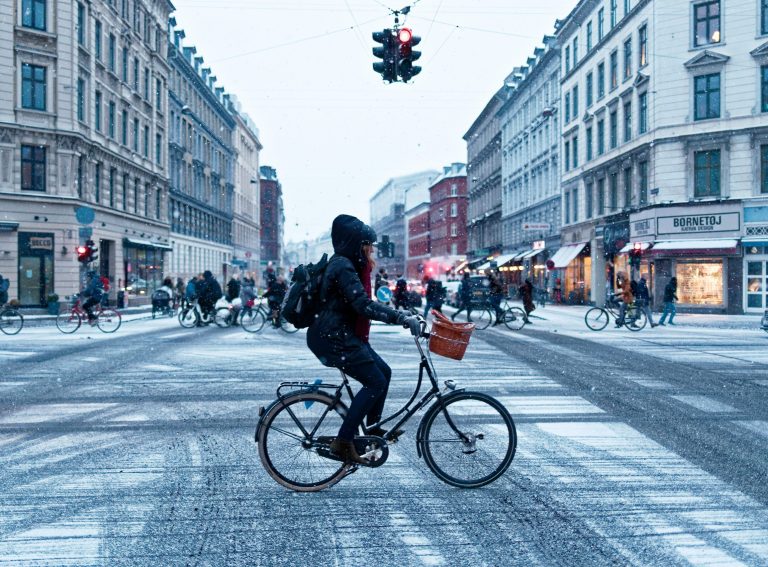For our On Trial series, Zag’s asking micromobility leaders from across the industry to share their response to the evaluation report from the Department for Transport (DfT). Undertaken by Arup, it provides the most detailed analysis of the UK e-scooter trials to date.
Author: Matthew Pencharz, Voi’s Head of Public Policy for the UK, Ireland and France
The explosion of micromobility schemes across the UK, the tens of millions of rides taken, and the number of car journeys replaced has proven beyond doubt the demand for these new modes of transport, and how important a lever they are for towns and cities to meet their climate and decongestion goals.
Voi alone has seen almost 24 million rides completed by 1.25 million people. With our users telling us that over a third of those journeys would otherwise have been completed by a car or taxi, that means more than nine million car trips have been replaced.
Drill down further into the statistics and they reveal another interesting fact – that e-scooter riders reflect the ethnic demography of their communities.
The Government’s National Evaluation into e-scooters published in December 2022, but with data based on dates to 2021, finds that “17% of e-scooter users were from an ethnic minority group”. This is broadly similar to the English adult population, where 12% are from an ethnic minority group.
Voi’s more recent surveys, including one completed in just the last few months, support these figures. Some 18% of our respondents identify as being from an ethnic minority, which is in line with 2021 Census data for the country. Our most diverse market by some distance was Birmingham, with around half the population being from an ethnic minority and our surveyed riders reflected this with over half of them identifying as being from an ethnic minority. A similar story is told in our other markets, such as Liverpool and the West of England.
The same Voi survey results also state that the incomes of our riders similarly reflect their communities, with neither lower nor higher income groups over-represented.
These findings contrast starkly with cycling. While the stereotype of the urban cyclist being an affluent, white male in lycra on an expensive racer may be unfair, the statistics do show a clear disparity between different demographic groups.
When it comes to the ethnic breakdown and the incomes of cyclists, in the years before the pandemic, people in the highest income level tended to take more cycle journeys than others and the proportion of white people cycling was far higher than for other ethnic groups.
Over ten years ago, Transport for London undertook research into what the barriers might be for ethnic minority people to take up cycling. However, the issue appears to have been put somewhat into the ‘too difficult to solve’ box with little apparent activity from cycling groups or transport authorities to improve these figures.
Up until the pandemic, men made 2.5 times the number of journeys than women, amounting to four times the distance. In 2020 these figures did narrow somewhat, with men making double the number of journeys and 2.5 times the distance. Now we appear to be post-pandemic and travel patterns have settled to a new normal, it would be interesting to know if these figures have improved further.
There is still work to do in encouraging women to ride e-scooters. The National Evaluation states that 71% of e-scooters riders are male, an issue that the industry is working hard to address. For example, Voi’s report in partnership with Women in Transport published last year had a number of recommendations that we are working to meet in order to overcome the obstacles to increasing female ridership.
Voi, and the wider micromobility industry, is proud that our services are reaching parts of the community that other sustainable modes have found challenging. It shows that e-scooters in addition to being safe, sustainable, affordable and convenient are clearly more accessible to some of our communities. If towns and cities are to meet our climate goals and entice people away from cars for those shorter urban journeys then people from all sections of society need to be given attractive sustainable choices.
It has become clear that e-scooters are one of those choices, and is why, after almost three years of trials and no clear timeline for legislation, it is imperative that the Government legalises e-scooters to give the industry and communities we serve more certainty, and allow more cities to have shared schemes.
There are many, many single occupancy car journeys that can be replaced by more sustainable modes. The government’s own Transport Decarbonisation Plan has a target that half of all urban journeys should be completed by cycling and walking by 2020.
If we are to tempt people away from cars then we need to give people a smorgasbord of sustainable choices. I myself am a cyclist – it’s an important part of my life – but not everyone wants to cycle or is able to cycle. And that is why we believe that micromobility in all its forms – including e-scooters – should be part of the government’s 50% target.











